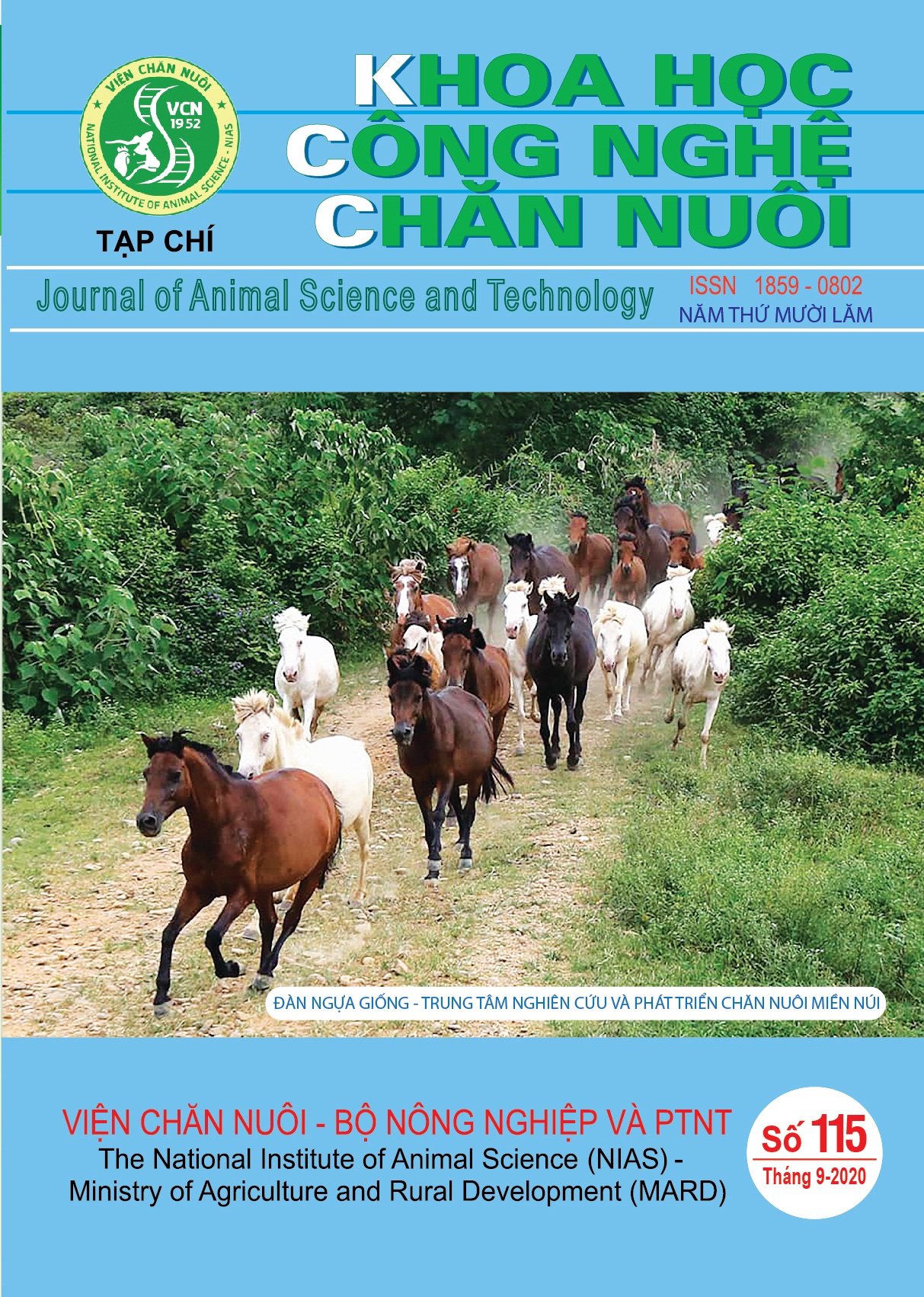Preliminary results of effects of probiotic supplementation on feed and nutrient intakes and reproductivity of crossbred rabbit does (Californian x local) in litter 1
The aim of this study was to determine the optimum level of probiotic incubated with wheat in the diets of does. Twenty five young Californian rabbit does were allocated in a complete randomized design with 5 treatments and 5 replications. The treatments were LU_P0, LU_P1,25, LU_P2,5, LU_P3,75 và LU_P5 corresponding to 5 levels of probiotic (Bio-Prozyme) incubated with wheat in diets being 0; 1,25; 2,5; 3,75 và 5% (DM basis). The diets included Para grass, water spinach, cabbage waste, soybean extract meal and wheat. The product supplemented included 96.0% wheat, 3% Bio-prozyme and vitamins and minerals 1% (feeding form). The results demonstrated that nutrients and energy intakes of does in pregnant period was the highest for the LU_P3,75 treatment (P<0.05) compared to others and they were 127; 27.9; 48.6 g/doe/day and 1,32 MJ/doe/day. For the LU_P0, LU_P1,25, LU_P2,5 and LU_P5 treatments these values were 121-122; 27.0-27.4; 44.6-46.5 g/doe/day và 1.27-1.28 MJ/doe/day, respectively. In the lactating period the nutrients and energy intakes followed the similar intake pattern of the does in the pregnant one and DM, CP, NDF và ME intakes of LU_P3,75 treatment were the highest values being 160; 35.0; 60.8 g/doe/day and 1.66 MJ/doe/day. While in the rest of treatments these values were 150-155; 33.5-34.4; 55.6-58.6 g/doe/day và 1.57-1.63 MJ/con/ngày, respectively. There were the increases of daily weight gain of does weekly in pregnant and lactating periods and they were 9.00-10.9 g/doe/day and 8.00-9.21 g/doe/day, respectively. In the LU_P3,75 treatment, the weaning weight per rabbit, weaning kid weight per litter, milk production per doe and daily weight gain of kid were significantly higher (p<0.05) than those of the others.
From the preliminary results, the conclusion could be that supplementing probiotic incubated with wheat at a level of 3.75 % (DM) improved daily weight gain of rabbit does, weaning kid weight per rabbit, weaning kid weight per litter, milk production per doe and daily weight gain of kid; and the experiment should be continued to evaluate the next litters to confirm the results for the practice recommendations.

